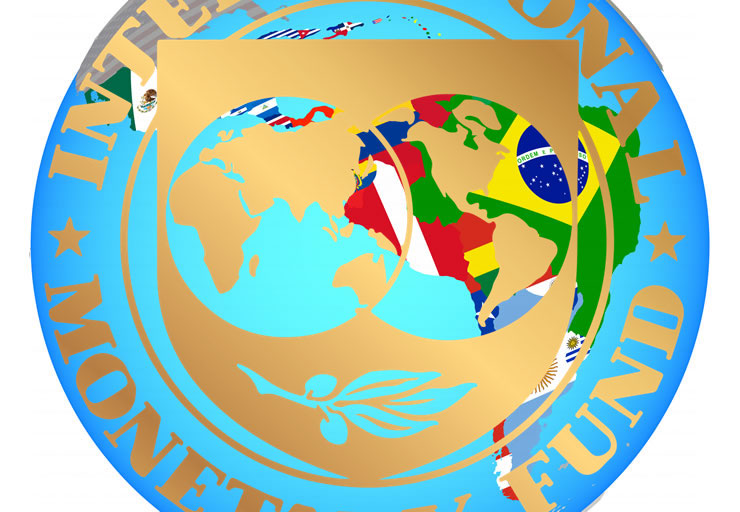Rising interest rates by central banks to combat inflation and the impact of Russia’s war in Ukraine on markets are the main factors running through the International Monetary Fund’s (IMF) economic outlook update for Latin America.
In this new report, the organization projects that the economy of Latin America and the Caribbean will grow 3.9% in 2022, an upward revision from October’s projection, when it placed the region’s GDP growth at 3.5% for the previous year.
In addition, for 2023, there is a slight upward revision of 0.1% from October to 1.8% growth for the current year.

“Growth in the region is projected to rise to 2.1% in 2024, albeit with a downward revision of 0.3% due to tighter financial conditions, lower prices for exported commodities, and downgrades in trading partner growth,” the document notes.
As for the two main economies of the region, the IMF forecasts the following: Brazil would have a growth of 1.2% in 2023 and 1.5% in 2024, while Mexico would have a GDP of 1.7% and 1.6%, respectively.
On these two particular projections, it is highlighted that the forecast reflects improvements of 0.2% for Brazil and 0.5% for Mexico in 2023 due to the unexpected resilience of domestic demand, higher than expected growth in the economies of major trading partners, and, in the case of Brazil, higher than expected fiscal support.
Regarding inflation in Latin America, the IMF highlights that lower fuel and commodity prices for fuels have contributed to lowering the overall price level, an effect also seen in the United States and the Eurozone.
“In emerging market and developing economies, annual inflation is projected to fall from 9.9% in 2022 to 8.1% in 2023 and 5.5% in 2024, i.e., above the pre-pandemic average of 4.9% (2017- 19),” the international agency said.
It further specifies that there are signs that the tightening “of monetary policy is starting to cool demand and inflation, but the full impact is unlikely to materialize before 2024″.
However, the international body clearly points out that “in most economies, in the face of the cost-of-living crisis, the priority remains to achieve sustained disinflation”.
There, it points out that with the current monetary conditions that are more restrictive and a slower pace of growth that could affect financial and debt stability, “it is necessary to resort to macroprudential tools and strengthen the frameworks for debt restructuring”.
It should be recalled that, also in January, the World Bank projected growth of only 1.3% for Latin America and the Caribbean at the end of 2023.
PROJECTIONS FOR THE GLOBAL ECONOMY
The document, published at the end of Monday, January 30, projects that world growth will register an estimated decline from 3.4% in 2022 to 2.9% in 2023 and then rebound to 3.1% in 2024.
But, says the agency, although the 2023 forecast is revised upward (0.2%), this is below the historical average between 2000 and 2019, which is 3.8%.
“Neither global GDP nor global GDP per capita is projected to record negative growth, which is typically the case when a global recession occurs,” it adds.
The strong 2022 performance is mainly explained by a strong third quarter of 2022 in many economies, including the United States, the euro area, and major emerging markets and developing economies.
There, factors such as stronger-than-expected private consumption and private investment weighed in the context of labor shortages and higher-than-expected fiscal support.
The IMF says the rapid spread of Covid-19 in China “slowed growth in 2022, but the recent reopening has cleared the way for a faster-than-anticipated recovery.”
Global inflation is projected to decline from 8.8% in 2022 to 6.6% in 2023 and 4.3% in 2024, still higher than levels seen before the pandemic (2017-2019) of around 3.5%.
Finally, and in line with the global demand trajectory, “global trade is projected to decline in 2023 to 2.4%, despite easing supply bottlenecks, and rebound to 3.4% in 2024″.
RISKS TO THE ECONOMIC OUTLOOK
Upside risks: plausible upside risks include more favorable domestic spending surprises – such as in the third quarter of 2022 – which would lift inflation further. At the same time, there is room for an upside scenario with lower-than-expected inflation and less monetary tightening:
- Stimulus coming from pent-up demand.
- Faster disinflation.
Downside risks: Many downside risks continue to weigh on the global outlook, dampening growth while, in several cases, further stoking inflation:
- Stagnation in China’s recovery.
- A resurgence of the war in Ukraine.
- Debt overhang tensions.
- Persistent inflation.
- Sudden revaluation in the financial market.
- Geopolitical fragmentation.
With information from Bloomberg

